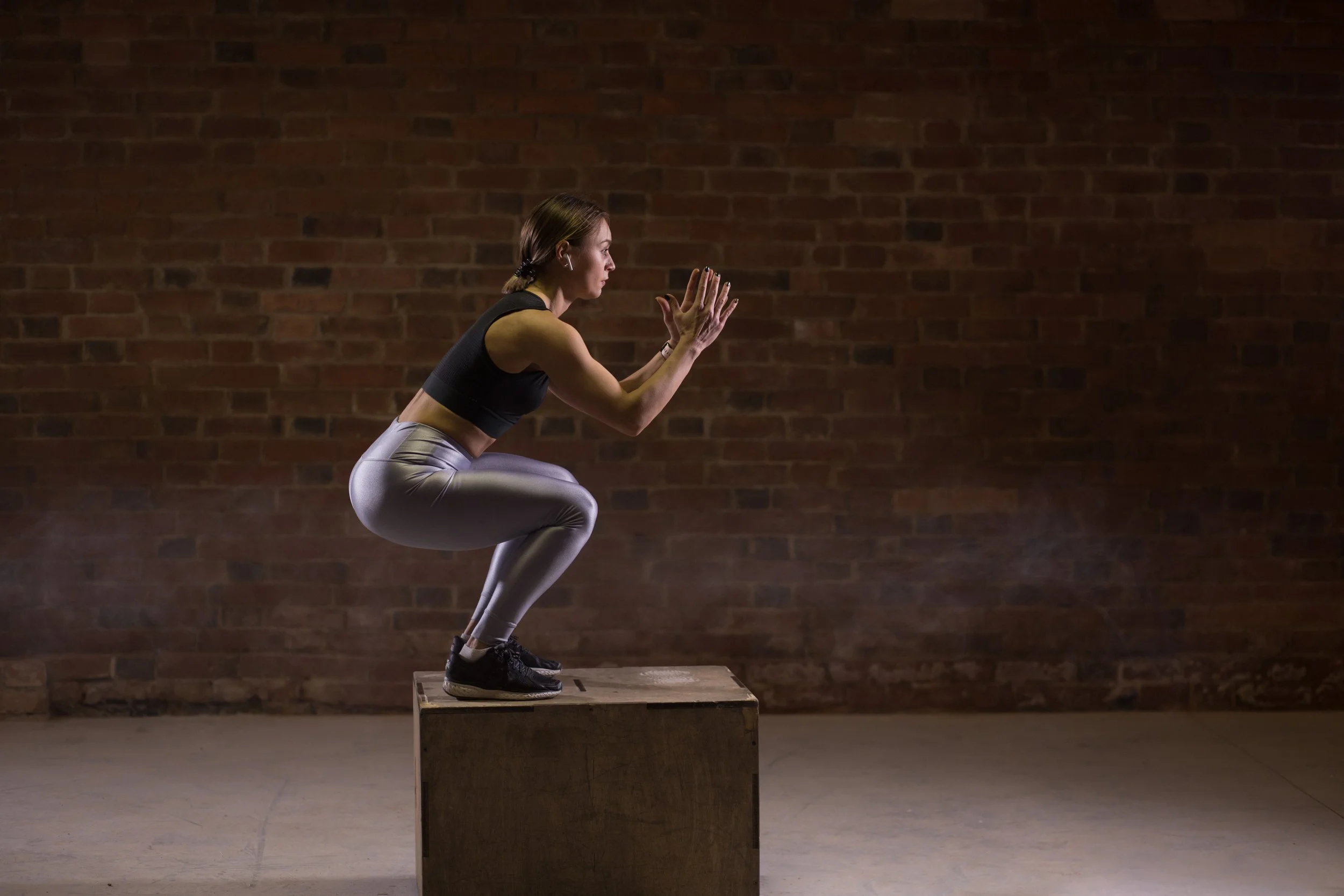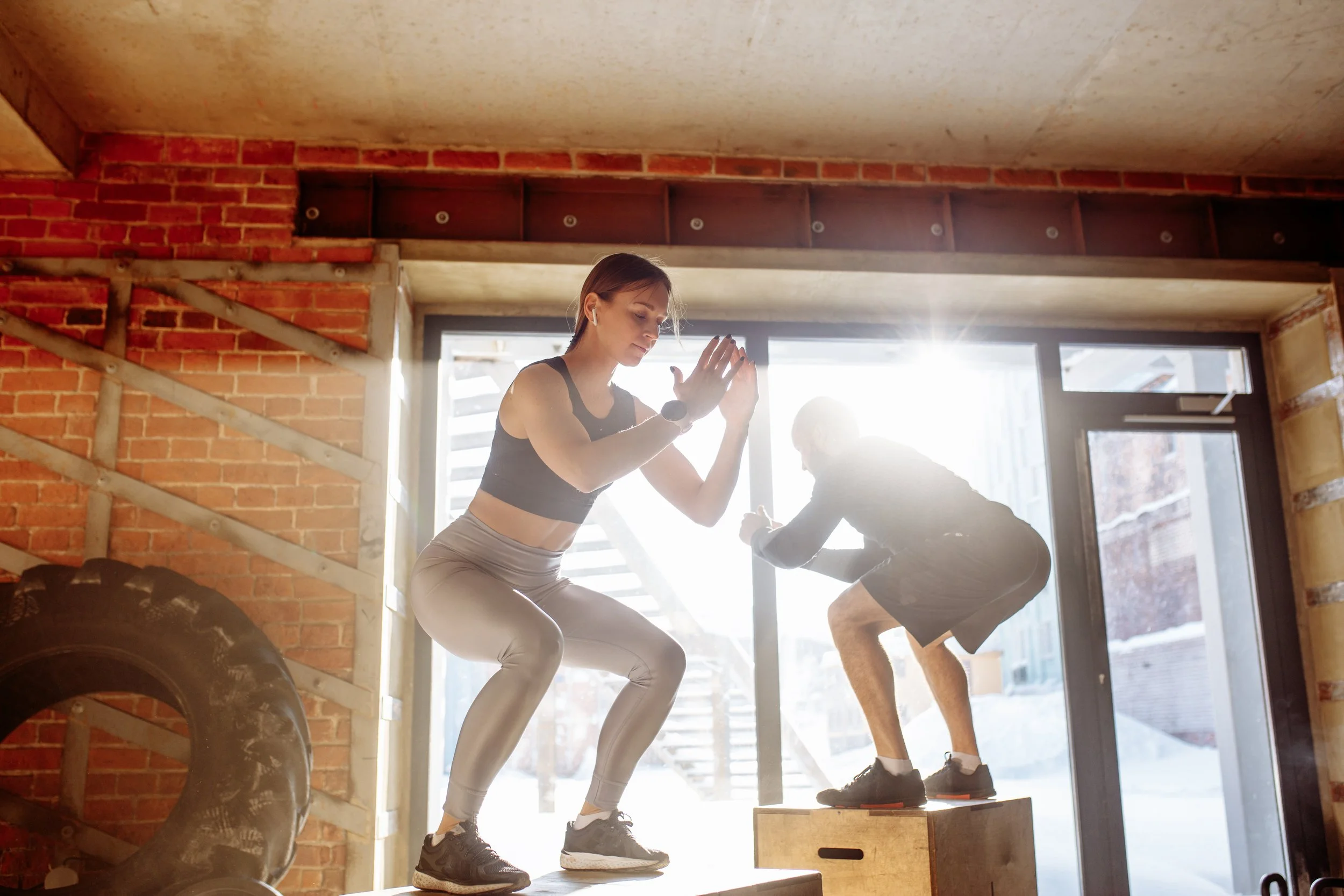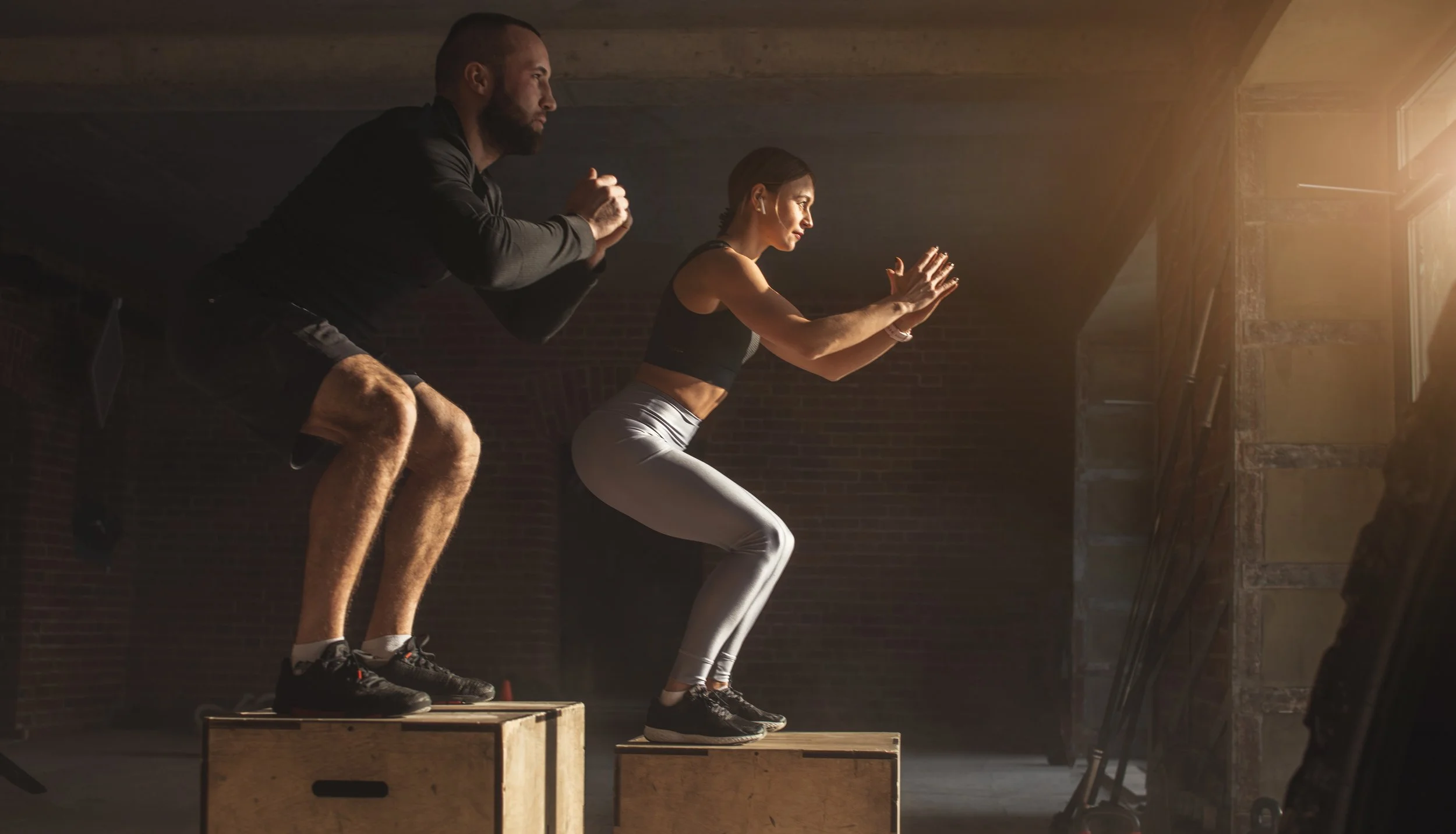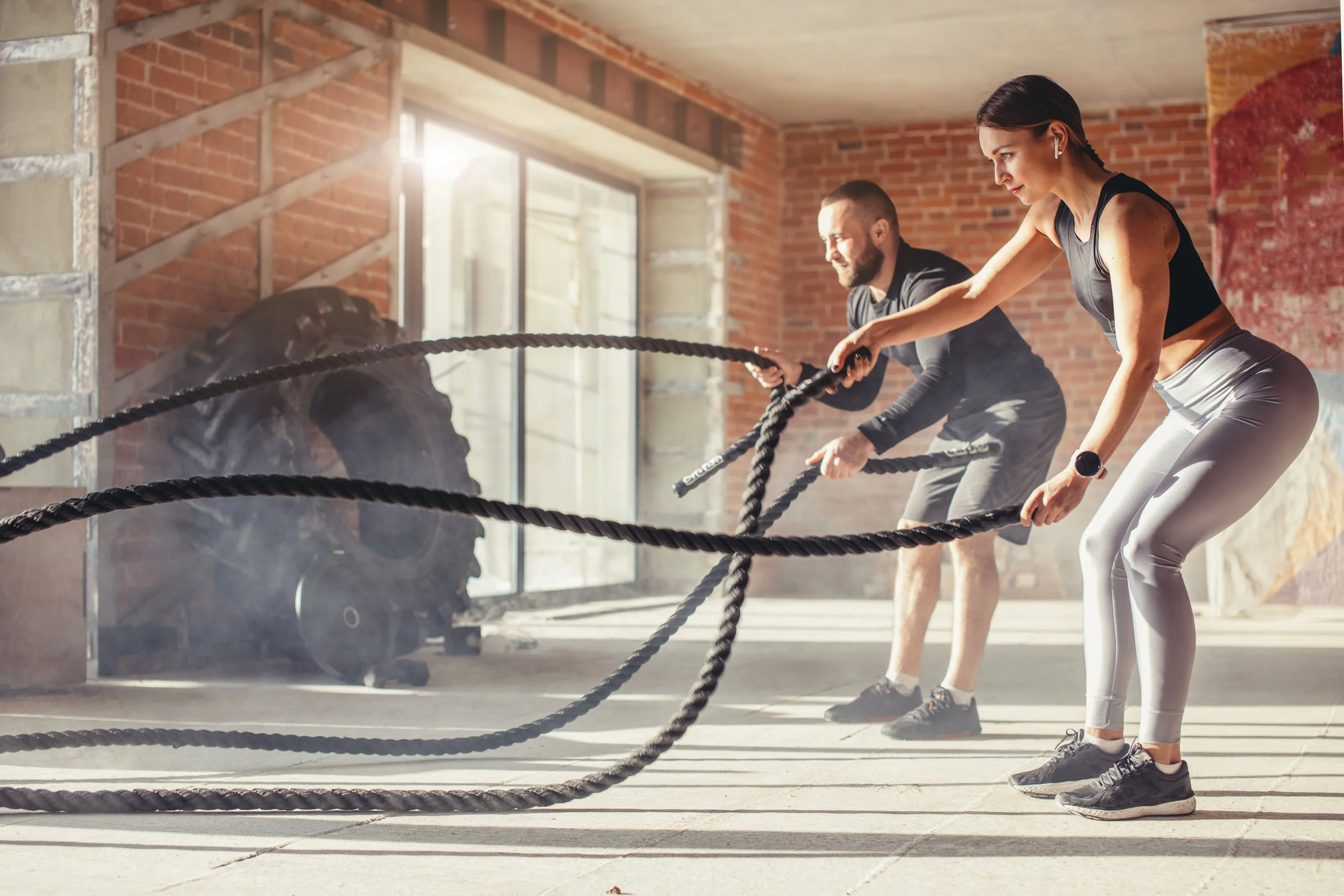ACL Series Part 3
ACL Rehabilitation
The third and final part of this ACL series is where the fun really begins! If you have been following along you have read about my personal experiences with ACL reconstruction including pre-surgery, surgery, and acute post-op phases. Parts 1 and 2 are linked here:
Part 3 will cover all things strengthening!
I don’t tend to name specific dates when it comes to post-ACL rehab timelines. I have seen enough ACL tears and have now had my own personal experience to know that every athlete’s timeline is going to be different. Everyone recovers at different rates and are presented with combinations of obstacles along the way. It is important to recognize that just because a protocol outlines a timeline, it is imperative that the athlete has met all the requirements of the previous phase before moving on to the next. For the purposes of this blog, I will be discussing these timelines based on typical patterns, my own experience, and evidence-based practices, not any one protocol.
““ I have seen enough ACL tears and have now had my own personal experience to know that every athlete’s timeline is going to be different. .””
In part 2 of this series, we left off on the goals of the first week after surgery with emphasis on managing pain levels/swelling, restoring range of motion, and initiating quad activation. As the athlete begins incorporating more strengthening, it will be important to keep these goals in mind as it will help provide a guideline for appropriate progressions.
ACL POst Operative Quad Weakness
In the first few weeks of rehab the athlete will likely have noticeable weakness in quads, hamstrings, and proximal hip musculature. They will also likely still have some residual swelling and range of motion deficits- particularly in knee flexion. This phase can be difficult to navigate as we want to make sure the athlete is not experiencing increases in pain/swelling or decreases in range of motion while also progressively loading the weak areas.
““When patients are able to start treating the knee more “normally,” that’s when I believe the rehab process really clicks and they take off on the road to recovery and back to sport.””
In my own personal rehab, I can remember attempting a heel lower/tap down exercise and quite literally not being able to activate my quad enough to bend my knee to touch the ground from a 1-inch box. At this point I was still extremely weak in my quad, but I was also limited by pain from the incision down the front of my knee where they harvested my patellar tendon. It felt ridiculous having such difficulty with that small of movement, but hey, that’s rehab.
ACL Rehab Consistency is Key
With all of that in mind, this is the part where consistency of hard work really pays off. There are so many creative things you can do in this stage to stay moving and maintain your previous level of activity. As someone who participated in higher levels of fitness before my surgery, I was determined to avoid losing this level of activity. I made sure I kept my routine of 4-5 CrossFit classes a week. Obviously, the movements I was able to participate in were very different from those pre-surgery but nonetheless, I was there, and I was working hard.
““The surgery is the easy part. Recovery is a marathon. It is the next 9+ months of rehab with a good therapist and team that help get the patient to the ideal outcome.” ”
how a typical REHAB session would go for me:
1. 10-15 minutes of dynamic mobility
Check out my blog post on the importance of warming up for a list of my favorite dynamic mobility movements. Of course, some things needed to be modified and then progressed based on my strength and range of motion at any given time, but you get the point.
2. 25-30 minutes of Physical Therapy
When it comes to exercise prescription, we need to take into consideration the load, volume, and ranges of motion with each movement. Every athlete will likely have a different tolerance with each exercise. This could be due to a variety of reasons such as graft choice, baseline strength prior to surgery or even experience level with new movements. At this stage we are mostly focusing on restoring strength. It is important to provide progressive, yet varied, activities and ensure proper mechanics with each movement. We want to make sure we are not increasing stimuli, whether that be volume, load, or intensity, of a particular drill until the athlete has mastered the basic movement pattern.
These were some of my favorite movements to incorporate:
3. 15-20 minutes of Crossfit/Metabolic Conditioning/HIIT
To be honest, my workouts looked a little odd considering I had very limited use of my right leg for the first few weeks. I find that it is easy to “throw in the towel” and accept the multitude of excuses that can be made to avoid maintaining a high level of activity when undergoing post-surgery rehab. It takes a lot more grit and creativity to stay motivated and engaged. I focused on trying to do as much of a crossfit workout as I could while staying safe and protecting my surgical knee. You could find me using an Airdyne or Assault bike with just my arms and not my legs. You’d see me using the rower with my right foot extended on a slider to avoid knee flexion ranges that my knee would not allow at the time. Even modifications as simple as seated movements instead of standing. These adjustments allowed me to not only continue to elevate my heart rate and burn some calories, but it also allowed me to continue feeling like an athlete. It’s easy to feel fragile but there are still so many things to work on and get better at, even when recovering from a torn ACL!
4. 10 minutes of miscellaneous recovery drills as needed
This is where I would address any ongoing limitations that needed a little TLC. I had quite a bit of hip flexor tightness initially from walking around in my locked brace for the first few weeks, so I would spend time doing some soft tissue work here.
Not everyone’s journey will look the same, especially at this phase. Some days will feel like you are making no progress at all, and others will make you feel like nothing ever happened in the first place. Just remember that our bodies are incredible and much more resilient than we sometimes feel. Be smart about your rehab, follow your PT’s instructions and show your knee who’s boss!
““Work hard in your recovery but be patient. The recovery is a long, pain-staking process but, ultimately, most patients do very well with modern techniques”.”
Stay tuned for ACL Journey Part 4
Manny writes about the specifics of her Return to Sport (RTS) protocol and personal experience.
More Blogs & Webinars
AUTHOR:
Manny Tharrington, PTA, CSCS, CFSC
CONTRIBUTORS:
Dr. Christopher Wahl, MD
Frm UW & Chargers Team Physician, Sports Medicine Physician & Orthopedic Surgeon
Dr. Dayne Mickelson, MD
Former College Basketball Starter, Proliance Orthopedics and Sports Medicine
Dr. Ron Gregush, MD
ProOrtho Kirkland
Dr. John Manning, MD
Evergreen Health Orthopedics & Sports Medicine
Ben Wobker, PT, MSPT, CSCS, CFSC, SFMA
Founder & Director LWPT
REFERENCES
Filbay SR, Roos EM, Frobell RB, et al. Br J Sports Med 2017;51:1622–1629
Tanaka R et al. Efficacy of strengthening or aerobic exercise on pain relief in people with
Li, Y et al. The effects of resistance exercise in patients with knee osteoarthritis: a systematic review and meta-analysis. Clinical Rehabilitation. 2016 Oct;30(10):947-959
Zacharias A et al. Efficacy of rehabilitation programs for improving muscle strength in people with hip or knee osteoarthritis: a systematic review with meta-analysis. Osteoarthritis Cartilage. 2014 Nov;22(11):1752-73
Fransen, M. Exercise for osteoarthritis of the hip or knee. Cochrane Database Syst Rev. 2003;(3).
Goh, SL et al. Efficacy and potential determinants of exercise therapy in knee and hip osteoarthritis: A systematic review and meta-analysis. Annals Physical Rehabilitation Medicine. 2019 Sep;62(5):356-365
Bartels, EM et al. Aquatic exercise for the treatment of knee and hip osteoarthritis. Cochrane Database Syst Rev. 2016 Mar 23;3
Allyn M et al. The pain-relieving qualities of exercise in knee osteoarthritis. Open Access Rheumatology: Research and Reviews 2013:5 81–9
Horga, LM et al. Can marathon running improve knee damage of middle-aged adults? A prospective cohort study. BMJ Open Sport Exerc Med. 2019; 5(1)
Webster, K. and Feller, J. (2019). Expectations for Return to Preinjury Sport Before and After Anterior Cruciate Ligament Reconstruction. The American Journal of Sports Medicine, 47(3), pp.578-583.
Myer, G., Paterno, M., Ford, K., Quatman, C. and Hewett, T. (2006). Rehabilitation After Anterior Cruciate Ligament Reconstruction: Criteria-Based Progression Through the Return-to-Sport Phase. Journal of Orthopaedic & Sports Physical Therapy, 36(6), pp.385-402.
Sadeqi, M., Klouche, S., Bohu, Y., Herman, S., Lefevre, N. and Gerometta, A. (2018). Progression of the Psychological ACL-RSI Score and Return to Sport After Anterior Cruciate Ligament Reconstruction: A Prospective 2-Year Follow-up Study From the French Prospective Anterior Cruciate Ligament Reconstruction Cohort Study (FAST). Orthopaedic Journal of Sports Medicine, 6(12), p.232596711881281.
Cordasco, F., Black, S., Price, M., Wixted, C., Asaro, L., Heller, M., Nguyen, J. and Green, D. (2018). Return to Sport and Re-Operation Rates in Athletes Under the Age of 20 Following Primary Anterior Cruciate Ligament Reconstruction: Risk Profile Comparing Three Patient Groups Predicated Upon Skeletal Age. Orthopaedic Journal of Sports Medicine, 6(7_suppl4), pp.2325967118S0005.
Graziano, J., Chiaia, T., de Mille, P., Nawabi, D., Green, D. and Cordasco, F. (2017). Return to Sport for Skeletally Immature Athletes After ACL Reconstruction: Preventing a Second Injury Using a Quality of Movement Assessment and Quantitative Measures to Address Modifiable Risk Factors. Orthopaedic Journal of Sports Medicine, 5(4), p.232596711770059.
Losciale, J., Zdeb, R., Ledbetter, L., Reiman, M. and Sell, T. (2019). The Association Between Passing Return-to-Sport Criteria and Second Anterior Cruciate Ligament Injury Risk: A Systematic Review With Meta-analysis. Journal of Orthopaedic & Sports Physical Therapy, 49(2), pp.43-54.
Meierbachtol, A., Yungtum, W., Paur, E., Bottoms, J. and Chmielewski, T. (2018). Psychological and Functional Readiness for Sport Following Advanced Group Training in Patients With Anterior Cruciate Ligament Reconstruction. Journal of Orthopaedic & Sports Physical Therapy, 48(11), pp.864-872.
LaBella, C., Hennrikus, W. and Hewett, T. (2014). Anterior Cruciate Ligament Injuries: Diagnosis, Treatment, and Prevention. PEDIATRICS, 133(5), pp.e1437-e1450.
Risberg, M., Grindem, H. and Øiestad, B. (2016). We Need to Implement Current Evidence in Early Rehabilitation Programs to Improve Long-Term Outcome After Anterior Cruciate Ligament Injury. Journal of Orthopaedic & Sports Physical Therapy, 46(9), pp.710-713.
Arundale, A., Capin, J., Zarzycki, R., Smith, A. and Snyder-Mackler, L. (2018). TWO YEAR ACL REINJURY RATE OF 2.5%: OUTCOMES REPORT OF THE MEN IN A SECONDARY ACL INJURY PREVENTION PROGRAM (ACL-SPORTS). International Journal of Sports Physical Therapy, 13(3), pp.422-431.
Failla, M., Arundale, A., Logerstedt, D., Snyder-Mackler, L.(2015). Controversies in Knee Rehabilitation: Anterior Cruciate Ligament Injury. Clin Sports Med. 34(2),pp. 301-312.
Laible, C. and Orrin, S. (2014). Risk factors and prevention strategies of non-contact anterior cruciate ligament injuries. - PubMed - NCBI. [online] Ncbi.nlm.nih.gov. Available at: https://www.ncbi.nlm.nih.gov/pubmed/25150329 [Accessed 1 Apr. 2019].
[i] Toor, A. S., Limpisvasti, O., Ihn, H. E., McGarry, M. H., Banffy, M., & Lee, T. Q. (2019). The significant effect of the medial hamstrings on dynamic knee stability. Knee surgery, sports traumatology, arthroscopy : official journal of the ESSKA, 27(8), 2608–2616
[ii] Pujji O, Keswani N, Collier N, Black M, Doos L. Evaluating the Functional Results and Complications of Autograft vs Allograft Use for Reconstruction of the Anterior Cruciate Ligament: A Systematic Review. Orthop Rev (Pavia). 2017;9(1):6833. Published 2017 Mar 29. doi:10.4081/or.2017.6833
[iii] Samuelsen BT, Webster KE, Johnson NR, Hewett TE, Krych AJ. Hamstring Autograft versus Patellar Tendon Autograft for ACL Reconstruction: Is There a Difference in Graft Failure Rate? A Meta-analysis of 47,613 Patients. Clin Orthop Relat Res. 2017;475(10):2459-2468. doi:10.1007/s11999-017-5278-9\
[iv] Kim, Sung-Jae et al. “Bone-patellar tendon-bone autograft could be recommended as a superior graft to hamstring autograft for ACL reconstruction in patients with generalized joint laxity: 2- and 5-year follow-up study.” Knee surgery, sports traumatology, arthroscopy : official journal of the ESSKA vol. 26,9 (2018): 2568-2579. doi:10.1007/s00167-018-4881-y
[v] Mouarbes, Dany et al. “Anterior Cruciate Ligament Reconstruction: A Systematic Review and Meta-analysis of Outcomes for Quadriceps Tendon Autograft Versus Bone-Patellar Tendon-Bone and Hamstring-Tendon Autografts.” The American journal of sports medicine vol. 47,14 (2019): 3531-3540. doi:10.1177/0363546518825340







